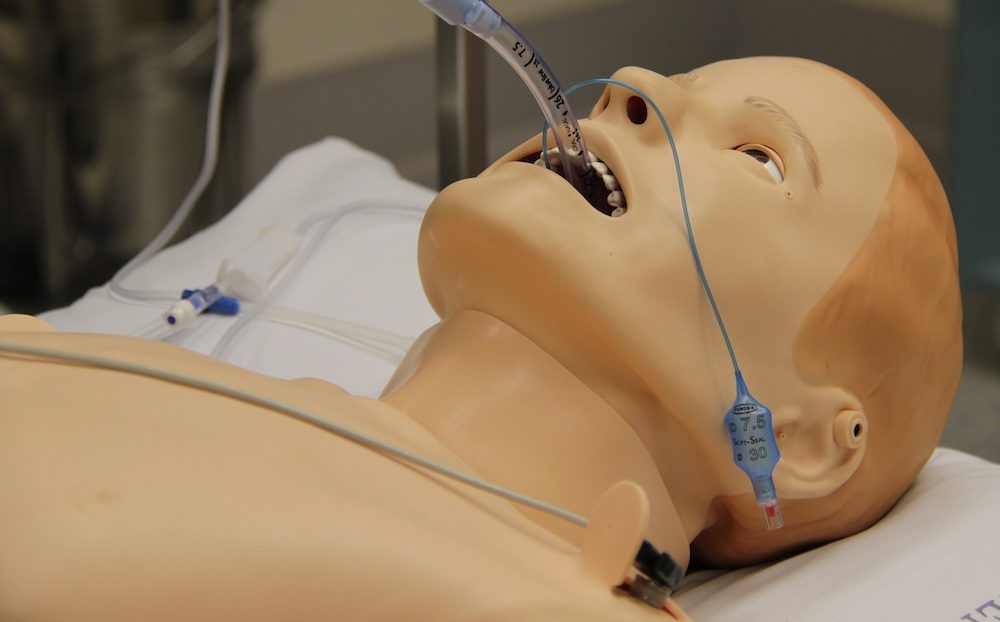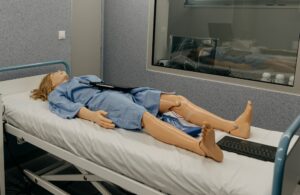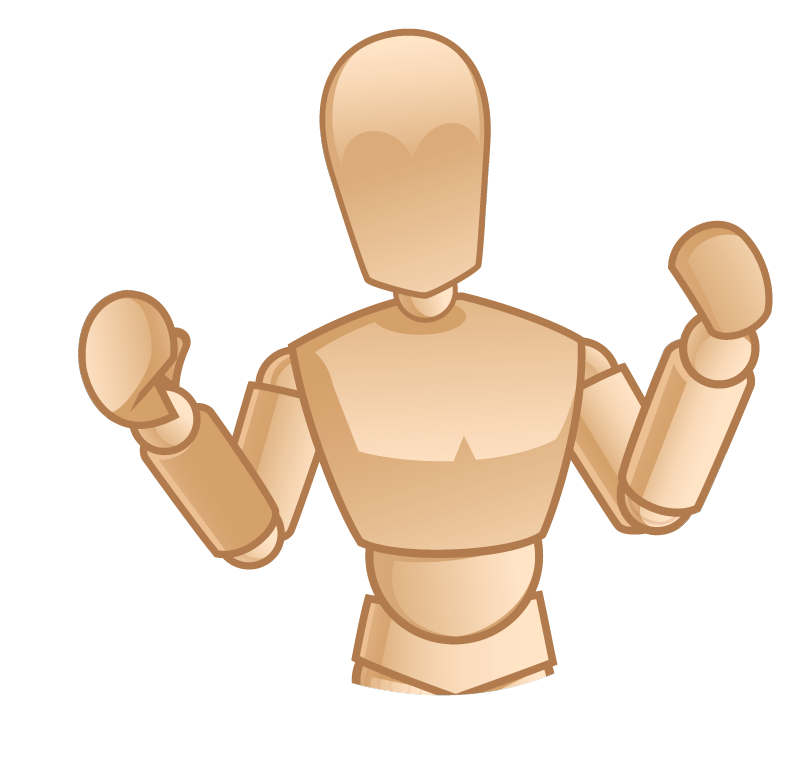Manikin
A manikin is a full-body patient simulator that mimics human anatomy and physiology and safely allows for the teaching of clinical skills in a professional healthcare setting. Many health professional schools incorporate manikins into their training programs and Healthcare Simulation models, as they are high-quality tools that can help healthcare learners grow in their professional identities, conceptualize their relationships with patients, augment their cognitive thinking, and enhance their communication skills.
While some medical professionals still refer to these training devices as “mannequins,” the preferred term is actually manikin. This professional verbiage has been elevated based on its increased use among research publications, professional organizations, and vendors. Additionally, the term “mannequin” is thought to be more closely aligned with fashion than healthcare.
A manikin can be used in situ or in a Healthcare Simulation environment such as those found within a Simulation Center. Healthcare professionals and educators may also be familiar with other terms for manikin, including human patient simulators, pediatric simulators, surgery simulators, TruTourniquet simulators, or even birthing simulators. Here are some key factors to consider when it comes to using manikins in a professional Clinical Simulation setting.
Sponsored Content:
Manikins Have a Wide Range When It Comes to Levels of Realism
A manikin can vary in its level of realism (the amount that it mimics actual human appearance), and some levels of realism may be more pertinent to certain audiences. A low-fidelity manikin is a segmented clinical task trainer capable of a small number of specific tasks or procedures, such as an IV arm or a CPR manikin. This can be helpful for healthcare learners who are looking to master a specific task or skill.
A mid-fidelity manikin is usually a full-body simulated patient; however, it may have minimal computer components. A high-fidelity manikin, like the SimMan, incorporates the latest in computer hardware technology. High-fidelity manikins are commonly wireless and can be programmed to provide for a very realistic full-body patient presentation.
These manikins with the highest level of realism can be used in a variety of high-stakes learning scenarios and Interprofessional Education (IPE) such as mock codes, postpartum hemorrhage, or mass-casualty incidents.
Sponsored Content:
The Basics of Using Manikins in Healthcare Education
Today, a manikin can be used in almost every aspect of healthcare education, ranging from military para-rescue missions and first responder traumatic accidents to primary care simulation scenarios for nursing, medical, and surgical training. Manikins get produced by a range of companies globally, such as SimMan from Laerdal, Ares from CAE Healthcare, and Noelle from Gaumard, which is the leading high-fidelity birthing manikin.
The Benefits of Manikins in a Healthcare Learning Environment
Manikins help learners engage in patient assessment by providing cues as to a patient’s state through the demonstration of vital signs such as pupil dilation, rate of pulse, rate of breath through chest rise and fall, or circulation through cyanotic discoloration. Having to physically assess and take into account these vital signs during a patient assessment is a skill that is difficult to master using other learning methods such as listening to lectures, passively reading, or even a verbal recitation. In a written exam, all of the pertinent information must be provided for the learner. However, in simulation with a manikin, the learner must identify the problems to determine what is occurring. Learners usually know the solution, but have difficulty identifying the problem.
HealthySimulation.com is dedicated to providing the latest Manikin news and #MedSim resources from around the world. To follow along, sign up for our free medical simulation email newsletter, follow @HealthySim on Twitter and @HealthySim on Facebook, or join our HealthySimulation.com LinkedIn Company Page!
Other ways in which manikins can assist learners in mastering crucial skills include:
- Providing IV access and practice in safely administering medications
- Assessing patients suffering from acute events such as respiratory distress, heart failure, airway obstruction, dyspnea, massive blood loss, trauma, or other healthcare simulation scenarios
- Fostering an early first relationship between a healthcare provider and a patient
- Enabling learners to develop skills under close supervision in a low-pressure setting
- Creating a learning environment that can be utilized remotely when necessary such as in settings that require social distancing
- Increasing accessibility to knowledge and information, especially as it relates to clinical scenarios that are uncommonly encountered in clinical care, but necessitate specific responses and skills
Recent research on Nursing Simulation has also shown that manikins can help students:
- Develop their professional identity
- Promote the development of caring and communication skills
- Develop specific behaviors related to their healthcare roles (such as teaching nursing students how to behave like nurses)
- Enhance social learning within the healthcare environment, such as team-based interactions
Increasing Value for Learners Via Manikins
Professional healthcare educators and Medical Simulation staff can enhance the realism of manikins by adding Moulage and other props — including wigs or clothing. This can bring a learner’s experience with a manikin even closer to a realistic patient presentation. Moulage can also help humanize a manikin, differentiate between learning experiences, and foster greater learning by emphasizing immediacy and realism.
Click Here to Connect to Leading Healthcare Simulation Manikin Vendors
To help learners review their performance and continue with progressive learning, Healthcare Simulation scenarios incorporating a manikin are usually digitally recorded through a learning management system such as those available from SIMStation , EMS SimulationIQ, SimCapture, or KBPort. After a mock code or other scenario, participants can examine their own performance in a simulation debriefing session. This can help reviewers receive constructive feedback in a near real-time environment and also help them further review days later to reinforce their skills.
Using Manikins to Increase Learner Safety During the COVID-19 Pandemic
Many aspects of healthcare were transformed after the onset of the COVID-19 pandemic, and healthcare training programs were not immune to this disruption. Many learners were disheartened to learn that in-person learning pathways (such as shadowing and even some clinical rotations or internships) would be curtailed out of necessity for both learner and patient safety.
Many training programs were limited in the amount of exposure afforded to students because of hospital rules, so certain classes of students would not receive the amount of traditional contact with patients that normally informed their learning. This meant that using high-fidelity manikins and being able to run mock patient Medical Simulation scenarios in highly realistic settings was of even greater necessity and importance.
Simulating Diverse Patients That Are Representative of True Patient Populations
New technology in manikin construction and development is continuing to make strides in simulating a realistic healthcare environment. In Healthcare Simulation, healthcare learners must be able to learn technical skills while also developing interpersonal skills that will bolster their interactions with future patients. For this reason, emerging manikin technology, such as models produced by Echo Healthcare and Lifecast Body Simulation, aim to ensure accuracy and realism of patients, representing diversity of race, age, gender, weight, and size. This new manikin design can help students better prepare for the world that they will be serving as healthcare professionals.
Enhancing Realism With New Technological Advances
When manikins can closely mimic the experience of working with a real patient, learners can have more salient and long-lasting learning experiences in a Medical Simulation environment. For this reason, manikin technology continues to evolve.
The Gaumard Pediatric HAL S2225, “most advanced pediatric patient simulator” can confer life-like emotions via dynamic facial expressions, eye movements, and even speech. Learners can provide real-time support with SpO2 monitoring, EKG, capnography, NIBP, live pacing, and defibrillation, and they can also perform surgical airways, needle decompression, and chest tube insertions. This manikin is available in three skin tone options and is wireless and tetherless, further enhancing its value for healthcare learners.
Similar to how manikins are evolving in their realism, manikin technology is continuing to evolve in its reaction to specific healthcare simulation scenarios. For example, Augmented Reality Overlay technology on top of manikins can help simulate obstetric emergencies such as shoulder dystocia. The major advantage of Augmented Reality Overlay technology is that instead of having to verbally explain a given scenario to learners, trainers will be able to actually HoloLens technology.
Manikin technology has also been used for remote and distance learning through recorded video or “telesimulation,” such as in the case of healthcare professionals who received COVID-19 ventilator management training early in the pandemic, when social distancing requirements would have prohibited this training otherwise.
Other new manikins that enhance realism are the SimMan Critical Care and MamaAnne. The new SimMan Critical Care, integrated with IngMar’s ASL 5000 technology, is designed to meet the needs and requirements of healthcare students and professionals with a special focus on critical care, respiratory care, and anesthesia while continuing to offer the functionality that the previous SimMan has delivered for two decades, which includes trauma care and emergency medicine. With IngMar Medical’s technology, healthcare simulation educators can provide hands-on training using a real ventilator! IngMar Medical is the world leader in breathing simulation – a distinction built on a solid history of quality, innovation, and customer service.
MamaAnne is a solution for clinical educators and learners to practice focused and efficient training to reduce the occurrence of adverse obstetric events. High-fidelity clinical simulation builds confidence and competence when facing critical, obstetric emergencies. MamaAnne, the maternal and birthing simulator, provides the platform for obstetric training through simplified configuration for rapid use and setup, a reinvented automatic delivery system, and flexible solutions to adapt the scenario and meet competency requirements for evidence-based practice and better maternal outcomes.
Mannequin Technology Will Continue to Enhance Learning for Healthcare Professionals
Healthcare learners need to acquire critical skills to enhance their professional growth, and now, more than ever, healthcare simulation learning environments equipped with manikins are rising to the call. A poll showed that, following the COVID-19 pandemic, 70% of the simulationists surveyednoted that their clinical educators/trainers “had a more favorable view of what their healthcare simulation can offer.”
In fact, Healthcare Simulation is situated to become one of the most important industries in the world, thanks to the lessons learned from the COVID-19 pandemic — even Bill and Melinda Gates, in their annual 2021 letter, noted that “running simulations will make sure everyone is ready to act quickly next time.”
Reference:
Mannequin Latest News:
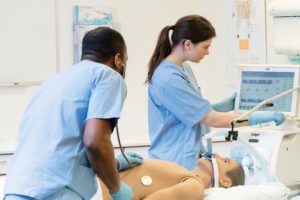
Laerdal Introduces SimMan Critical Care
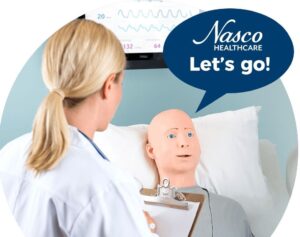
Leading Clinical Simulation Products from Nasco Healthcare
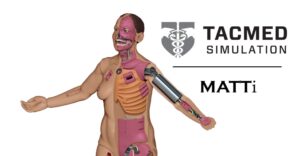
TacMed Solutions Launches Female Trauma Patient Simulator MATTi
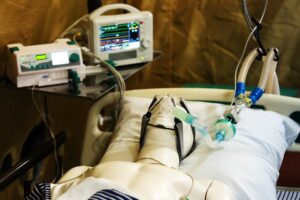
Defense Health Agency’s MST PMO Works to Optimize Warfighter Readiness and Improve Healthcare with Simulation
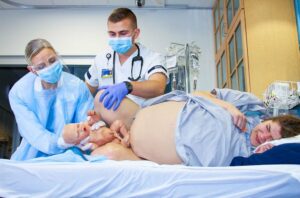
Wearable Device Technology for Enhancing Clinical Simulation
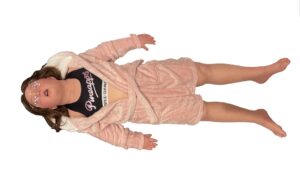
Lifecast Body Simulation and Echo Healthcare Release World’s First Child Manikin with Down Syndrome

How to Run a Postpartum Hemorrhage Nursing Simulation Scenario

The SAFETY Project: Healthcare Simulation Approach to Medical Education
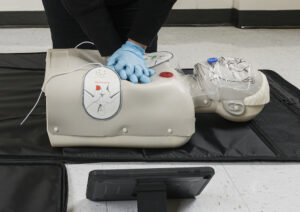
CAE Healthcare Basic Lifesaving Manikin Supports Valuable Training
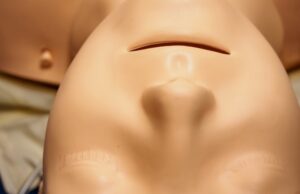
How to Make a Clinical Simulation ‘SALAD’ Simulator
Sponsored Content:
